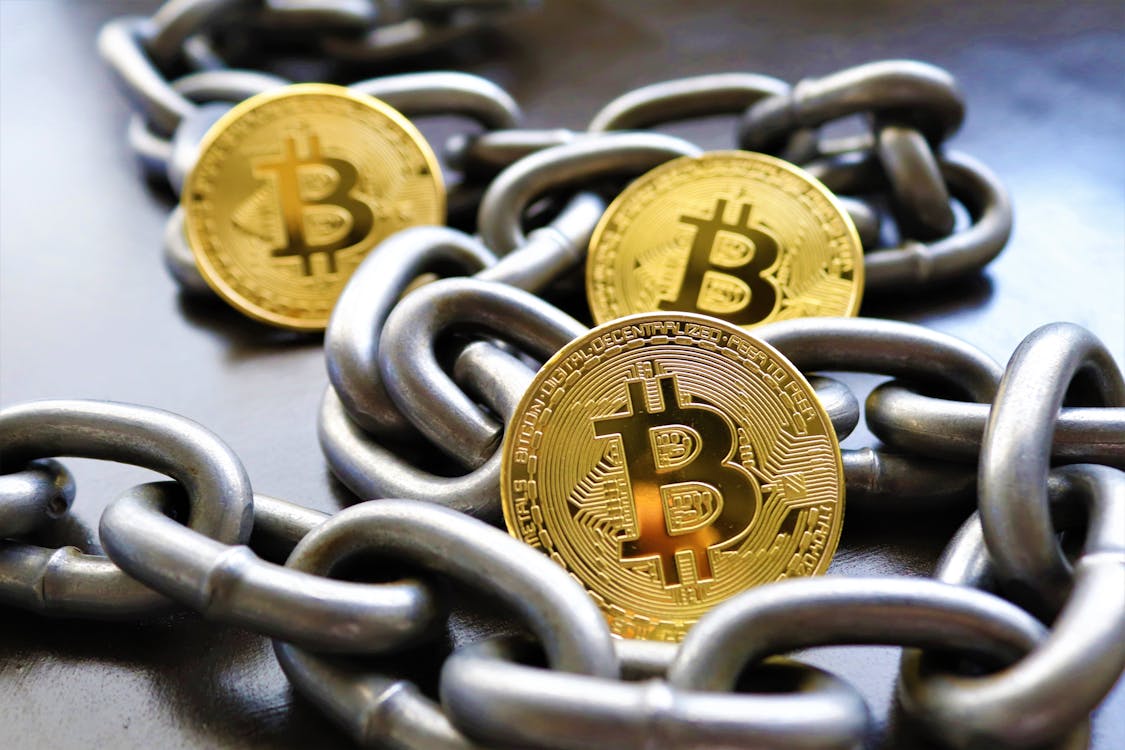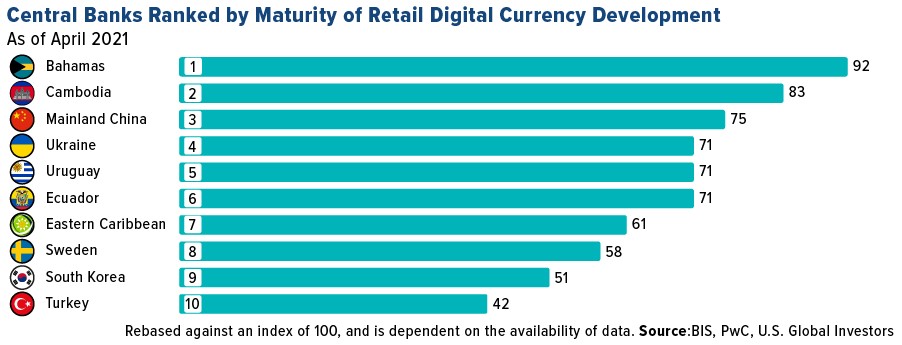Time For Silver-Backed Crypto?
Despite its recent selloff, Bitcoin remains the king of crypto currencies.
Its market recently exceeded $1 trillion. That’s a long way from its humble beginnings shortly after the 2008-2009 financial crisis.
Bitcoin will keep facing challenges as some governments disparage and regulate it, while others try bans of one form or another.
I doubt that will meet with much success. Big name money managers and high-profile tech entrepreneurs have gotten on board, many reversing their earlier doubts.
Bitcoin is decentralized, the blockchain is verified by over 100,000 independent nodes globally, and it has a hard limit supply of 21 million coins. Other cryptos and central banks may want in on this sector, but there will only ever be one Bitcoin.
Still, I think precious metals-backed cryptos could become serious contenders in the digital currency revolution, as the world looks for the security of safe havens with the convenience of crypto.

Image Source: Pexels
Crypto De-Fi Revolution
Bitcoin has come a long way. Today, it’s gained not only the acceptance of big-name investors like Paul Tudor Jones, Ray Dalio and Elon Musk, it’s been integrated by a number of well-established payment systems. MassMutual, a 170-year old insurance behemoth, bought $100 million worth of bitcoin last December. In February, Tesla announced it had bought $1.5 billion worth.
And crypto as a sector is exploding. PayPal recently said it was investing heavily into a new business unit aimed exclusively at cryptocurrencies. Their idea is to facilitate cryptocurrency payments across PayPal’s network, and this by the end of 2021. It’s all part of a burgeoning trend called decentralized finance, or DeFi.
Remember, there are an incredible 29 million merchants who use Paypal, meaning they will be able to accept cryptocurrency payments through that network. In fact to simplify things, PayPal will automatically convert the crypto payment into the national currency of the merchant.
The big advantage for merchants is the speed of transaction clearing. Credit card and bank payments typically take 24 hours or longer to settle. With crypto that will happen within seconds or minutes, allowing merchants to access their funds much sooner.
Just recently, Visa announced it would allow customers to use the USD Coin cryptocurrency to settle transactions on its network. USD Coin is a “stablecoin cryptocurrency” whose value is pegged to the U.S. dollar. This follows on the heels of Mastercard, BlackRock and BNY Mellon all confirming they would be facilitating crypto transactions for investments and payments.
Despite all this, some challenges remain.
Central Bank Digital Currencies
Many people can’t get past the idea that there’s nothing physical backing Bitcoin. And if you have no electricity you can’t get at your crypto.
The fact that nothing’s backing most cryptos is not that different from the currency we use today. It has value because central banks say so and people accept it. So that’s not the biggest hurdle. However, if there is a large and extended power outage, then there’s a real problem as crypto has to be accessed on a computer, tablet, or smartphone.
But these hurdles haven’t stopped numerous central banks from researching and implementing digital currencies. As the following chart shows, central banks around the world have been busy developing their own CBDCs (central bank digital currencies).

Over 60 central banks are currently working on this, so CBDCs are soon coming to a country near you.
These are not the same as cryptocurrencies. Central banks love the idea of eliminating cash. That’s because it allows them to track every dollar or other currency unit they create. That way they know who spends how much, when, where and on what.
The level of control that will ultimately give them will be unmatched. And the COVID-19 pandemic has massively accelerated this trend.
There are over 400 million people in China and India without a bank account. “Unbanked” people would have easier access to tax refunds or stimulus checks. China is pushing hard and fast towards making itself into a “cashless” society. It’s planning to make the 2022 Beijing Winter Olympics a completely cash-free event.
Don’t think the U.S. is willing to be left behind. This past February, Fed Chair Jerome Powell said a digital USD is a “high-priority project…We are looking very carefully, very carefully, at the question of whether we should issue a digital dollar.” Around the same time, Treasury Secretary Janet Yellen told the New York Times, “It makes sense for central banks to be looking at” CBDCs, adding that “too many Americans don’t have access to easy payments systems and banking accounts, and I think this is something that a digital dollar, a central bank digital currency, could help with.”
CBDCs can be created and distributed much more easily and quickly than existing currencies. This is a major problem in my view (think inflation), but it’s a major advantage if you’re a central planner.
Already the world has reached an astounding $281 trillion in total global debt, or more than 355% of world GDP. If CBDCs are adopted, I expect they will hasten this trend. Eventually, the entire financial system is likely to need a total reset.
Precious Metals Backed Crypto
I believe precious metals will have a major role to play. Even if I’m wrong on that point, they will still likely soar as inflation hedges.
In fact, I think that ultimately we may have a gold and/or silver backed crypto currency that is government mandated, once faith in fiat currencies is completely lost and a reset is required. That new currency will have both intrinsic value and the conveniences of crypto. And if that currency is on a blockchain which logs all transactions, then it can be very secure.
There are already several cryptos backed by precious metals or that are in the development stages. One of the biggest advantages of this approach to owning precious metals is that it allows ownership of small amounts, without dealing with storage issues, while offering security and the ability to easily and quickly transfer value to someone else.
Here are a few companies that are active in this space. For example, Aurus (https://aurus.io/) has built a platform allowing refineries, distributors and vaults to autonomously tokenise precious metals. There are other similar developments:
- deVere Group has the Pax Gold crypto, which is backed by a portion of a London Good Delivery gold bar
- Dignity Gold company has secured $6 billion in gold from mining claims in Nevada and Arizona for its DIGau digital token
- Lode (https://lode.one/) has the AUX Coin which represents 1 milligram of vaulted, audited, insured and verifiable gold bullion, and the AGX Coin is 1 gram of silver
(Note: I provide the above for informational purposes only. I am not endorsing any of these companies).
Even if precious metals backed cryptocurrencies don’t replace CBDCs, they are very interesting as they may go a long way to solving the problems of storage, security and rapid transferability.
This is certainly an area of precious metals to watch closely. People may well gravitate towards this as they seek a highly practical store of value, based on one of the oldest forms of real money: gold and silver.
And this could be a burgeoning new source of demand for precious metals, helping to push silver and gold much higher in the future.



